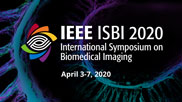Collection:

Pap smear method which is based on the morphological properties of cell nuclei is used to detect pre-cancerous cells in the uterine cervix. An automated and accurate segmentation of nuclei is essential in detection. In this paper, we propose an Interacting Convolution with Pyramid Structure Network (ICPN), which consists of a sufficient aggregating path that focus on more nucleus contexts and a selecting path that enable nucleus localization. The two paths are built on Interacting Convolutional Modules (ICM) and Internal Pyramid Resolution Complementing Modules (IPRCM) respectively. ICM reciprocally aggregates different details of contexts from two sizes of kernels for capturing distinguishing features of diverse sizes and shapes of nuclei. Meanwhile, IPRCM hierachically complements kinds of resolution features to prevent information loss in encoding precedure. The proposed method shows a Zijdenbos similarity index (ZSI) of 0.972(+/-)0.04 on Herlev dataset compared to the state-of-the-art approach.
- IEEE MemberUS $11.00
- Society MemberUS $0.00
- IEEE Student MemberUS $11.00
- Non-IEEE MemberUS $15.00
Videos in this product
Interacting Convolution with Pyramid Structure Network for Automated Segmentation of Cervical Nuclei in Pap Smear Images
Pap smear method which is based on the morphological properties of cell nuclei is used to detect pre-cancerous cells in the uterine cervix. An automated and accurate segmentation of nuclei is essential in detection. In this paper, we propose an Interacting Convolution with Pyramid Structure Network (ICPN), which consists of a sufficient aggregating path that focus on more nucleus contexts and a selecting path that enable nucleus localization. The two paths are built on Interacting Convolutional Modules (ICM) and Internal Pyramid Resolution Complementing Modules (IPRCM) respectively. ICM reciprocally aggregates different details of contexts from two sizes of kernels for capturing distinguishing features of diverse sizes and shapes of nuclei. Meanwhile, IPRCM hierachically complements kinds of resolution features to prevent information loss in encoding precedure. The proposed method shows a Zijdenbos similarity index (ZSI) of 0.972(+/-)0.04 on Herlev dataset compared to the state-of-the-art approach.
 Cart
Cart Create Account
Create Account Sign In
Sign In
